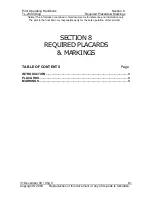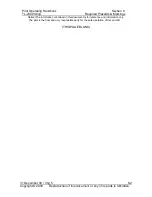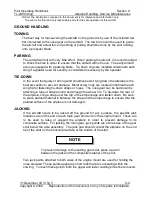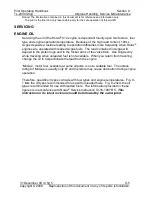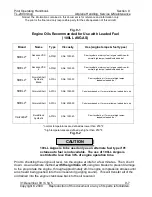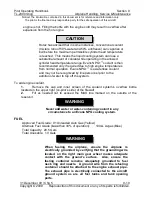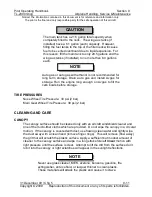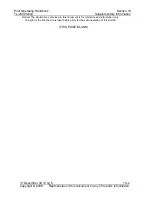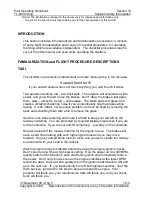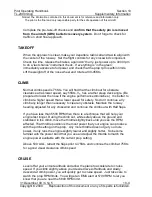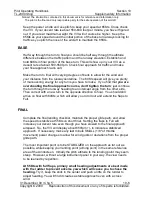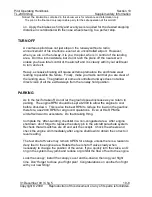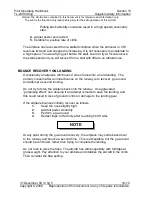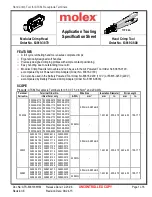
Pilot Operating Handbook
Section 9
TL-2000
Sting
Airplane Handling, Service & Maintenance
Notice! The information contained in this document is for reference and information only.
The pilot is the final and only responsible party for the safe operation of this aircraft.
31 December 09 / Chg 5
9-9
Copyright © 2009 Reproduction of this document or any of its parts is forbidden.
The careless draining of hot engine oil may cause scalds or
burns. Use caution when dealing with hot engine oil.
5.
Using a handheld pump, suck out the entire oil contents of the reservoir.
Environmental regulations prohibit dumping of engine oil. To properly
dispose of used oil, refill it into empty containers and take it to any
participating automotive store or service station for recycling.
6.
Unscrew old oil filter and remove using a plastic bag to prevent spillage.
7.
Fill the new oil filter half full with new engine oil before installation.
To ensure a better seal, rub fresh oil around the sealing ring of
the new oil filter.
8.
Snuggly screw on new oil filter by hand. Turn until hand tight and the seal is
compressed – do not over-tighten or use a tool.
9.
Place screen and baffle back into the oil reservoir and refasten the reservoir lid. Do
not damage the large “O” ring.
10.
Refill oil reservoir with new oil until the level is within range marks on the dipstick. Do
not overfill; the oil will be blown out the overflow line.
11.
Refasten the oil filler cap.
12.
Start the engine and check for oil pressure indication. Then, shutdown the engine
and check for oil leaks.
13.
Recheck the oil level on the dipstick.
ENGINE COOLANT (Glycol – Non-Silicone)
The standard engine coolant/antifreeze is an automotive, silica free, with the
trademark ‘
DEXCOOL’
on the container. (usually orange color) mixed 50/50 only
with
distilled water
.
Capacity: Replenish as required up to maximum of half the coolant overflow bottle.
The level in the overflow bottle should be about in the center of the bottle when the
NOTE
NOTE
WARNING

